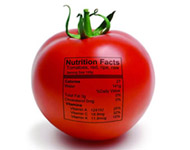Nutrition and Health Sciences, Department of

Department of Nutrition and Health Sciences: Faculty Publications
Document Type
Article
Date of this Version
2020
Citation
Metabolism Open 7 (2020) 100041 https://doi.org/10.1016/j.metop.2020.100041
Abstract
Purpose: The purposes of the present study were to (a) examine resting metabolism, substrate utilization, and endogenous versus exogenous carbohydrate (CHO) oxidation before and after 30-g rapidly-digesting carbohydrate (RDC) ingestion using indirect calorimetry and breath test analysis of stable isotope concentrations in pre-pubescent children and (b) report the 13C abundances in foods consumed for three days prior.
Methods: Nineteen children (n 1⁄4 10 boys, n 1⁄4 9 girls) at Tanner stage I or II participated (mean age ± 95% CI 1⁄4 9.84 ± 0.77 y) in this study. Food was administered to the children for three days preceding their scheduled breath tests. Breath tests and indirect calorimetry were performed after an 8-h fast before and 60 min following consumption of a 30-g simple RDC drink consisting of maltodextrin and sucrose. Open circuit spirometry and indirect calorimetry monitored resting metabolism and CHO oxidation. Separate breath samples were taken every 15 min. Samples of all foods and breath samples were analyzed for 13C and 12C abundances with a stable-isotope mass spectrometer.
Results: 13C in expired breath samples were 23.81 + 1.64‰ at baseline and increased every 15 min after consumption of the CHO drink (p < 0.001e0.009). Cumulative total, endogenous, and exogenous CHO utilization increased during the post-prandial period (p < 0.001). Endogenous CHO oxidation was consistently greater than exogenous CHO oxidation (p < 0.001e0.002). Blood glucose was elevated from baseline at 30- and 60-min post-prandial (p < 0.001). Insulin did not change over time (p 1⁄4 0.184).
Conclusions: The foods provided during the 3-day controlled diet effectively minimized 13C variation prior to metabolic testing. The 13C abundances of foods reported herein should serve as practical recommendations to reduce 13C intake before breath tests. While endogenous CHO oxidation remained greater in proportion to exogenous CHO oxidation, these findings suggest that even a relatively small amount of RDC can increase exogenous CHO oxidation and blood glucose in normal-weight children. To further examine shifts in endogenous versus exogenous CHO utilization, we recommend that future studies take steps to minimize 13C variation before breath tests and examine changes in substrate metabolism at rest and during exercise in normal weight and overweight pre-pubescent children. Clinical trial registration number: NCT03185884.
Included in
Human and Clinical Nutrition Commons, Molecular, Genetic, and Biochemical Nutrition Commons, Other Nutrition Commons


Comments
2020 The Authors.